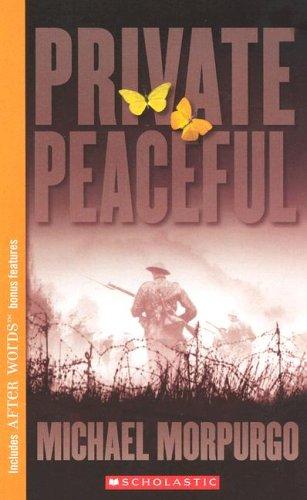
“I want to try to remember everything, just as it was, just as it happened. I’ve had nearly eighteen years of yesterdays and tomorrows, and tonight I must remember as many of them as I can. I want tonight to be long, as long as my life, not filled with fleeting dreams that rush me on towards dawn.” (page 1)
Morpurgo is at his best here with the subtle foreshadowing at the beginning with the crows caught in the fence, like the cavalry caught in the barbed wire of the battle fields and throughout in how Tommo relates his story. He was 15 when he enlisted in the British military, but only after Charlie agreed to lie for him and say that they were twins of the same age. These devoted brothers have shared everything — the sorrow of losing a father, the sorrow of losing a dog, the joy of finding Big Joe alive, and the love of Molly — but sharing everything also can breed secrets and resentment, which Tommo brings to the forefront when he speaks of Molly. From the beginning, readers are given a clear picture of Tommo’s devotion and love for Molly, but it is clear that she treats him more as a sibling and he refuses to see it.
“Every uniform and every helmet was like our own. Then, as we came down the gangplank into the fresh morning air, we saw them, the lines of walking wounded shuffling along the quay toward us, some with their eyes bandaged, holding on to the shoulder of the one in front. Others lay on stretchers. One of them, puffing on a cigarette between pale parched lips, looked up at me out of sunken yellow eyes. ‘G’luck lads,’ he cried as we passed. ‘Give ’em what for.’ The rest stayed silent and their staring silence spoke to each of us as we formed up and marched out of town.” (page 115)
Morpurgo’s prose is clear and concise to ensure the mood is vivid and the experience of first person has the full impact, particularly during training and in the trenches. A bit more for maturer audiences with its focus on the war and soldiering, but there are lighter moments of ribbing between the soldiers and talk of girls and even romance. However, Private Peaceful by Michael Morpurgo is more about a young man coming into his own and dealing with the decisions he’s made and the events he’s witnessed. Tommo has not only a colored past of poaching and death, but also a soldiering present that has tested his courage and devotion. An excellent introduction to The Great War.
This is my 2nd book for the WWI Reading Challenge.
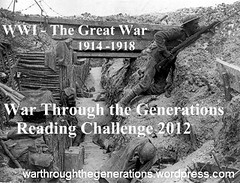



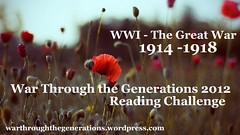
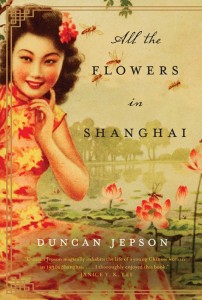
 About the Author:
About the Author:

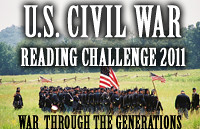
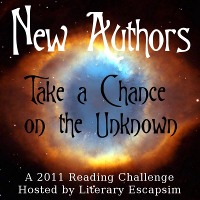
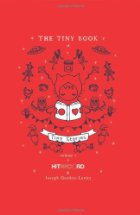
 For a collaborative project, it would seem that there is something missing, particularly since musicians participate in the collaborative. It’s almost as if the book should be an ebook with sound to accompany the images enclosed between the covers. The volume is just one in a series of books planned, and may work better on the website rather than in book form.
For a collaborative project, it would seem that there is something missing, particularly since musicians participate in the collaborative. It’s almost as if the book should be an ebook with sound to accompany the images enclosed between the covers. The volume is just one in a series of books planned, and may work better on the website rather than in book form.


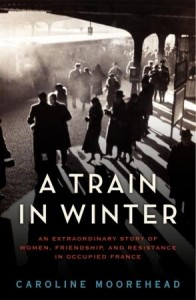

 About the Author:
About the Author:


